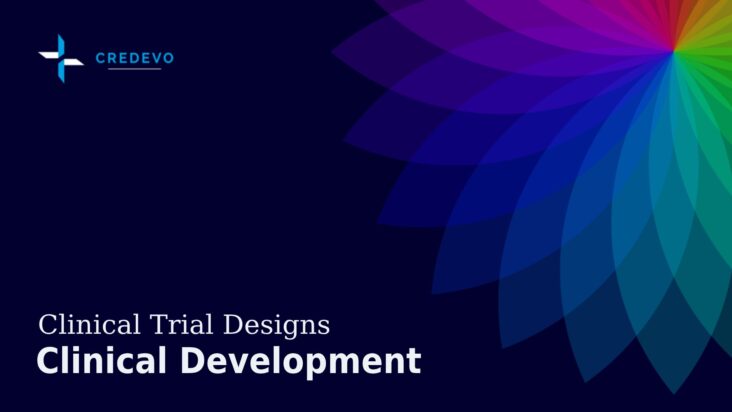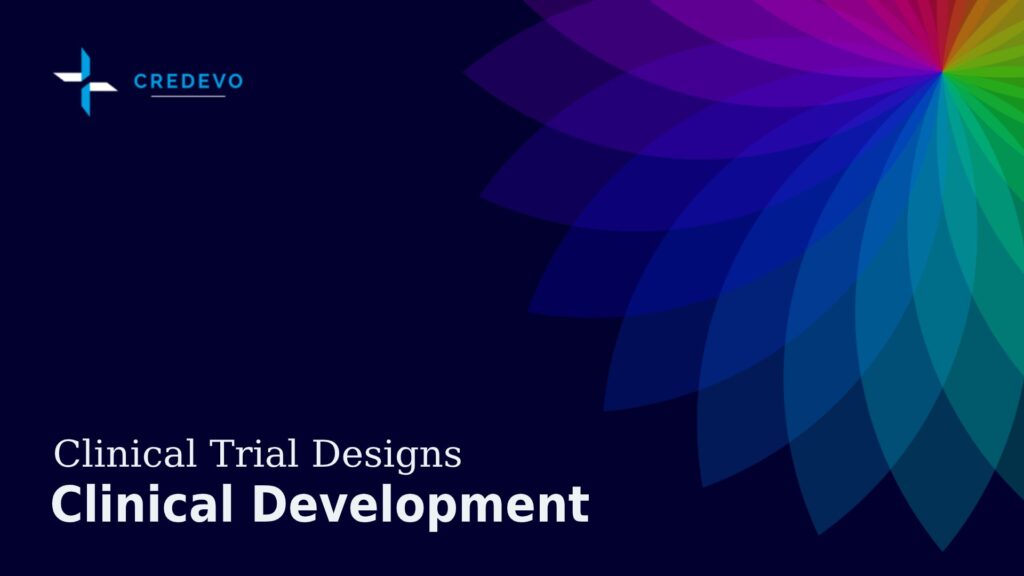Clinical Trial Design: RCT & Adaptive trial designs – Part I

To make a clinical trial faster, cost-efficient, and more successful, it all starts with a strategic design of a clinical trial, and the sturdy trial design is essential to ensure a successful clinical outcome.

A proper study design determines the fate of the clinical trial and its likeliness to be successful. A study design involves many critical parameters such as the number of patients to be recruited, the length or duration of the trial, the comparator arm, using the information on current treatments, the anticipated effect of the therapeutic intervention, and applying biostatistics methods, etc.
So let’s first understand what is a clinical trial design.
What is a clinical study design?
The clinical study design is the formulation of clinical trials, experiments, and observational studies in medical, clinical, and other types of research (e.g., epidemiological) involving human beings.
The goal of any clinical study or research is to assess the safety, efficacy, and/or the mechanism of action for an investigational medicinal product (IMP) or procedure, or new drug or device that is in development or to assess the bioequivalence (BE) of similar drugs in case of generic drugs.
The study designs vary with the goal and expected outcome from a clinical trial. Strategic experts design clinical trials to answer specific research questions related to a medical product.
These include
- Patient selection criteria
- How many subjects will be part of the study?
- Duration of the study?
- Administration of a drug to the patients (formulation & dosage)?
- Whether there will be a control group and other ways to limit research bias.
- What are assessments? What and when to collect the data?
- How about data review and analysis?
In this article, we will discuss the two major trial designs, Randomized controlled trials (RCT) and Adaptive trials where the researchers use commonly in many clinical trials.
Randomized Controlled Trials (RCT)
A Randomized Controlled Trial (RCT) is a type of scientific experiment that aims to reduce certain sources of bias when testing the effectiveness of new treatments and is accomplished by randomly allocating subjects to two or more groups, treating them differently, and then comparing them concerning a measured response.
For example, one group of the experiment receives the intervention, while the other usually, called the control group, receives an alternative treatment, such as a placebo or no intervention.
These RCT trials are of two types
- A well-blended RCT, which is often considered the gold standard for clinical trials, and
- Blinded RCT’s, test the efficacy of medical interventions, and additionally provide information about adverse effects, such as drug reactions.
Based on allocation, these are further
- Simple randomization: This method is similar to flipping a coin. This method provides an even distribution of subjects to each of the interventions.
- Block Randomization: Researchers use this method if there is concern that subjects may change over time. In block randomization, the number of patients or subjects in a block is defined. Researchers assign subjects equally and randomly within the block to the interventions.
- Stratified Randomization: Researchers use this method when there is concern that there is no balance of subjects based on baseline characteristics, such as age, length of time of disease, or disease control.
- Unequal Randomization: This method does not allocate subjects equally to study interventions. Instead, subjects are randomized in higher proportions to a defined intervention.
Advantages of RCT
- RCTs are the most reliable form of scientific evidence in the hierarchy of evidence.
- Randomized controlled trials reduce spurious causality and bias.
- The RCTs results may be combined in systematic reviews and are increasingly in use in the conduct of evidence-based practice.
Disadvantages
- RCTs can be expensive.
- The conduct of an RCT takes several years and It is costly to maintain RCTs for the years.
- Some trials using this design require extremely large sample sizes which may be difficult for recruitment.
Types of RCT
Blinded studies
Mean the researcher withholds the information that may influence the participants until after the experiment is complete. A researcher can impose blind on any participant of an experiment, including subjects, researchers, technicians, data analysts, and evaluators. Effective blinding may reduce or eliminate some sources of experimental bias.
These blinded studies are further
- Single Blind: Persons who collect outcome variables (observers) do not know treatment assignments.
- Double-Blind: Study participants and observers do not know treatment assignments.
- Triple Blind: Data interpreters, study participants, and observers do not know treatment assignments.
Non-Blinded studies (Open-label trial, or open trial) are the type of clinical trial where the researchers do not withhold the information from trial participants. Both the researchers and participants know which treatment they receive, and this contrasts with blinded studies.
Placebo-Controlled studies
In placebo-controlled studies, subjects are randomized to receive either a placebo (sugar-pill, or any other palatable substance with inactive excipients) or an active intervention. Placebo-Controlled trials may be challenging to perform, particularly if the intervention involves injection or use of a device.
Active Comparator
In some RCTs, subjects are randomized to an active comparator arm and compare against an experimental intervention arm. Active comparator trials are powerful methods to determine if a new therapy is non-inferior or superior to the current standard of care treatments.
Cross-Over Design
In this design, the researcher randomizes all subjects to the active comparator in cross-over to receive the experimental agent. After a set time, all the subjects who receive the experimental agent will cross over to the active comparator. The advantages of this design are that each subject serves as his/her control, and the number of subjects needs to answer a clinical question may be less.
Parallel group trial design
In parallel group randomization, after randomization, each participant will stay in their assigned treatment arm for the duration of the study. A researcher may apply parallel-group design to many diseases, allow to run experiments simultaneously in several groups, and groups can be in separate locations.
Matched pair trial design
In the matched-pair design, the researcher first matches the participants in pairs according to certain characteristics. Then, assigns each member of a pair randomly to one of the two different study subgroups. This allows a comparison between similar study participants who undergo different study procedures.
Some other types of trial designs in RCT
- Stratification also allows for a comparison between similar study participants who undergo different study procedures. The researcher groups all study participants according to one or more factors (such as age, gender, lifestyle factors, concomitant medication, etc.) before being randomized. This ensures a balance in the allocation within each combination.
- Cluster sampling: In cluster sampling, suitable geographical areas are found (for instance, city, region, etc.). A number of these geographical areas are then randomly chosen. For each of these chosen geographical areas, a proportionate subsample from the members of the study sample in that area is chosen, and combine these subsamples into a sample group.
- Withdrawal trials: In a withdrawal trial, the participant receives a test treatment for a specified time and then the researcher randomizes to continue either with the test treatment or a placebo (withdrawal of active therapy).
Adaptive clinical trials
Adaptive clinical trials are the trials that evaluate treatment or medical devices by observing participant outcomes and possibly other measures, such as side effects on a prescribed schedule and modifying parameters of the trial protocol following those observations.
An adaptive design consists of multiple stages, and at each stage, the researcher conducts and adapts data analysis based on updated information to maximize the probability of success of a trial.
- Modifications may include dosage, sample size, drug undergoing trial, patient selection criteria, and “cocktail” mix.
- The researcher sets the trial protocol before the trial begins. The protocol pre-specified the adaptation schedule and processes.
The common type of adaptive designs researchers use in Clinical Trials
- Group sequential design
- Error-spending approach
- Sample-size re-estimation design
- Pick the winner design
- Adaptive randomization designs
- Adaptive dose-escalation designs
- Biomarker-adaptive designs
Example of adaptive trials
- An adaptive trial design enabled two experimental breast cancer drugs to deliver promising results after just six months of testing, far shorter than usual.
- Researchers assessed the results while the trial was in process and found that cancer eradicates in more than half of one group of patients. The clinical trial is known as I-Spy 2, which tested 12 experimental drugs.
- Another example of adaptive design exists in early-phase dose escalation studies. These studies often employ prospectively planned interim reviews of pharmacokinetic and safety data by a review committee,
Advantages
- An adaptive trial aims to more quickly identify drugs or devices that have a therapeutic effect and to zero in on patient populations for whom the drug is appropriate.
- This trial design can reduce the number of patients in a trial and the number of clinical trials overall.
- Adaptive design is particularly useful for adequately controlled clinical safety and efficacy trials.
- Adaptive design can also be quite beneficial in early-phase studies, exploratory trials, and also in later trials to satisfy post-marketing commitments.
- FDA considers adaptive guidelines and provides guidance documents on
- When to interact with the FDA while planning and conducting adaptive design studies.
- What information to include in the adaptive design for FDA review, and
- issues to consider in a completed adaptive design study evaluation.
Disadvantages and challenges of adaptive trials
- The adaptive design may not be the best option for all clinical trials. For example, short-duration studies (e.g., 2-8 weeks) in which the researcher shall recruit populations quickly (in a few months) and need to halt recruitment while interim analyses.
- The trial may miss the critical insights during a rapid interim analysis captured by more thoughtful analyses following an exploratory study and such oversights can be costly and may extend overall development timelines.
Credevo clinical development strategy services
Credevo will help you in building clinical development strategies and selecting the right design for the successful and accelerated completion of your clinical trial.
Connect with us to discuss your clinical development needs.
References
- https://toolbox.eupati.eu/resources/clinical-trial-designs/
- https://www.pedsendo.org/assets/education_training/residents_fellows/research_opportunities/Clinical_Trials_and_Study_Design.pdf
- https://www.nuventra.com/resources/blog/adaptive-design-clinical-trials/
- https://www.scientific-european-federation-osteopaths.org/different-types-of-clinical-trials/
- https://www.veristat.com/blog/what-are-the-major-common-types-of-adaptive-designs-used-in-clinical-trials-today
- https://www.fda.gov/media/78495/download
- https://www.fda.gov/regulatory-information/search-fda-guidance-documents/master-protocols-efficient-clinical-trial-design-strategies-expedite-development-oncology-drugs-and